Last updated: October 26, 2021
Article
Buildings, Community, and Tourism
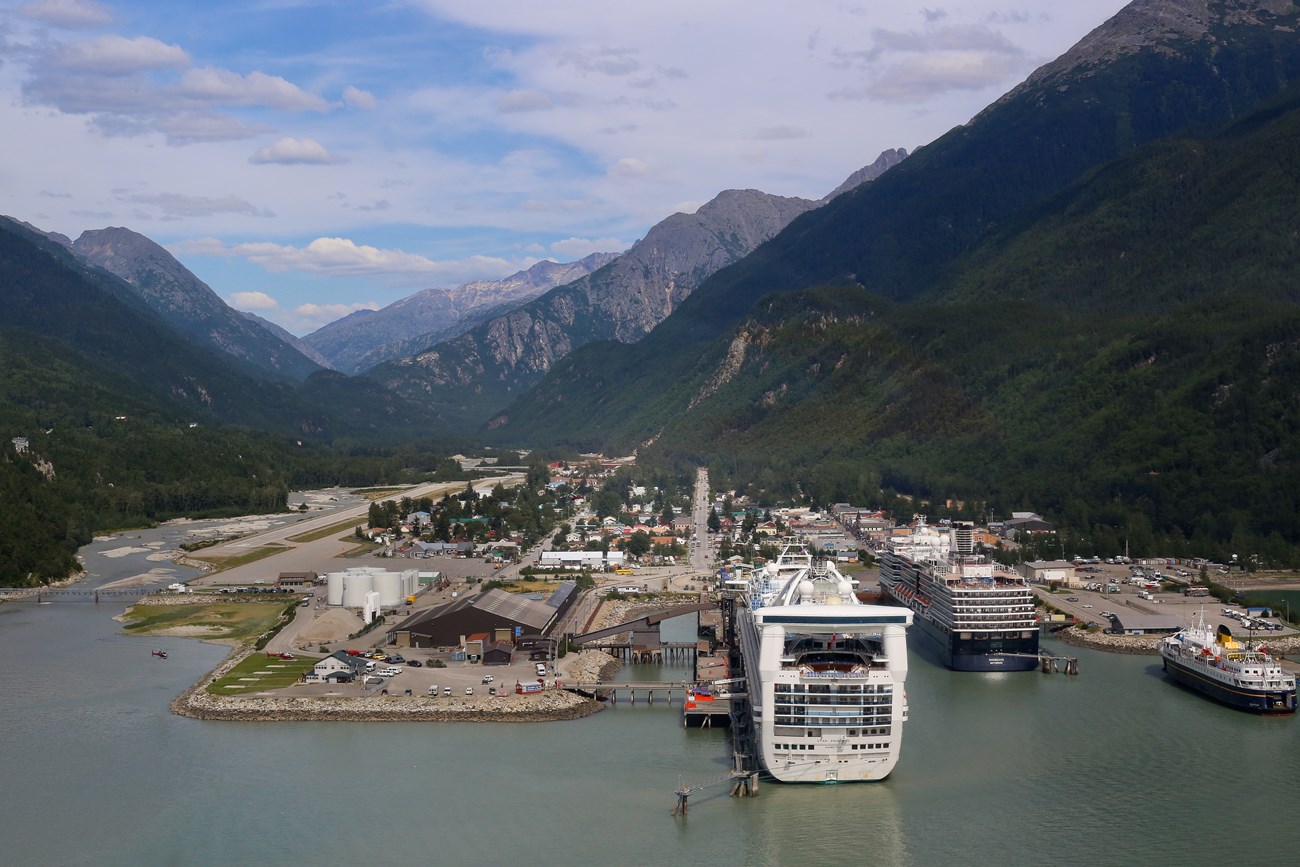
NPS photo/S. Millard
Today, buildings in Skagway’s historic district represent a commitment to maintain historical architecture on Broadway and Spring Streets. But immediately after the gold rush, Skagway residents directed their efforts towards the opposite goal. In the aftermath of the rush, Skagway was peppered with hastily built cabins left by fortune seekers. These constructions were considered an eyesore and community-based initiatives effectively dismantled the vacant shacks. As early as 1899 the Chamber of Commerce scheduled a “Skagway Clean-up Day,” a community-wide event to clean yards and streets for the upcoming tourist season. Similarly, businesses turned away from the rough and ready false fronts that served in the sudden flurry of the Klondike. Instead builders added double recessed doors and ornamental designs on commercial structures. The White Pass and Yukon Route Railroad Depot, on 2nd avenue is a nice example of this new generation of sophisticated tastes. Completed in 1900, the building features a Greek revival façade, display windows, embossed tinwork and recessed doors.
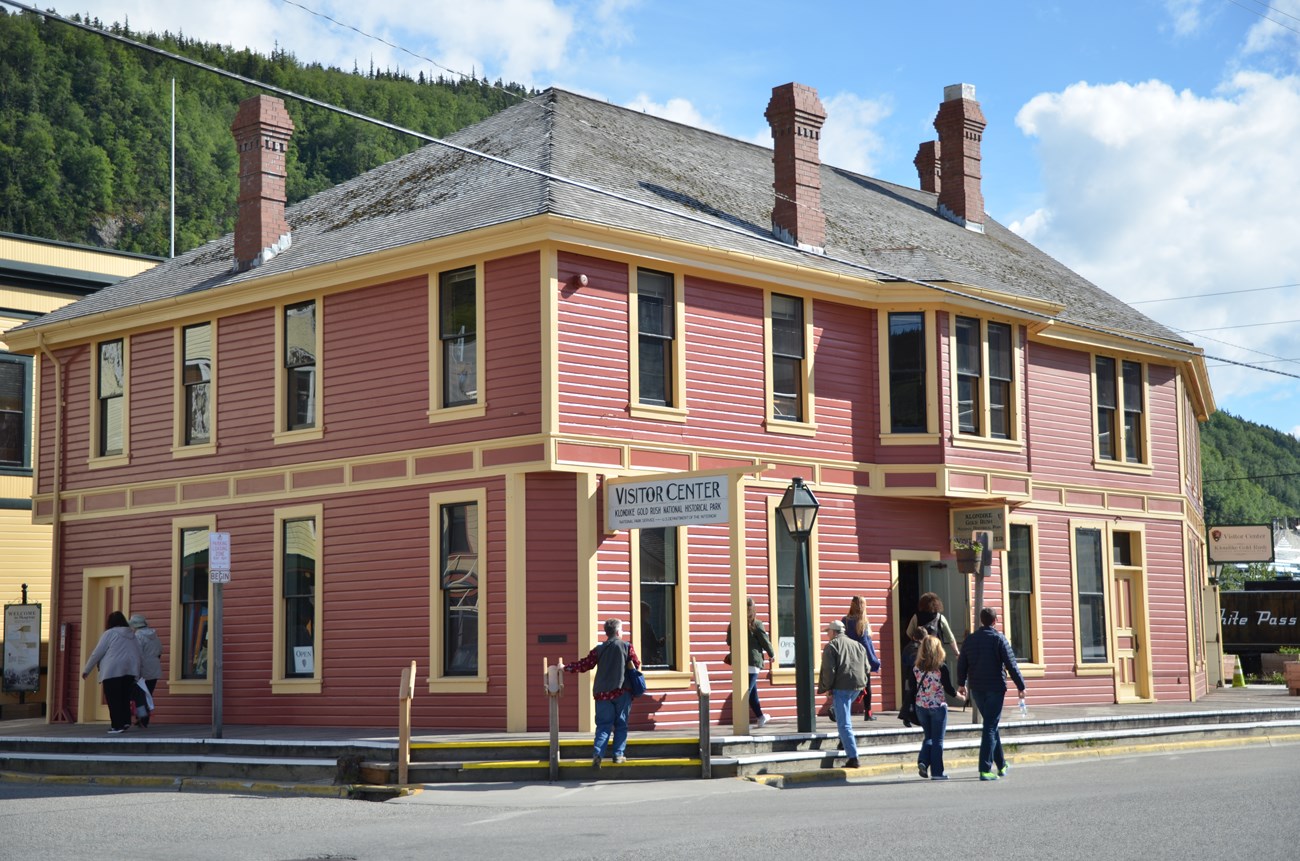
NPS photo/S. Spatz
From Stampeders to Cruise Ships
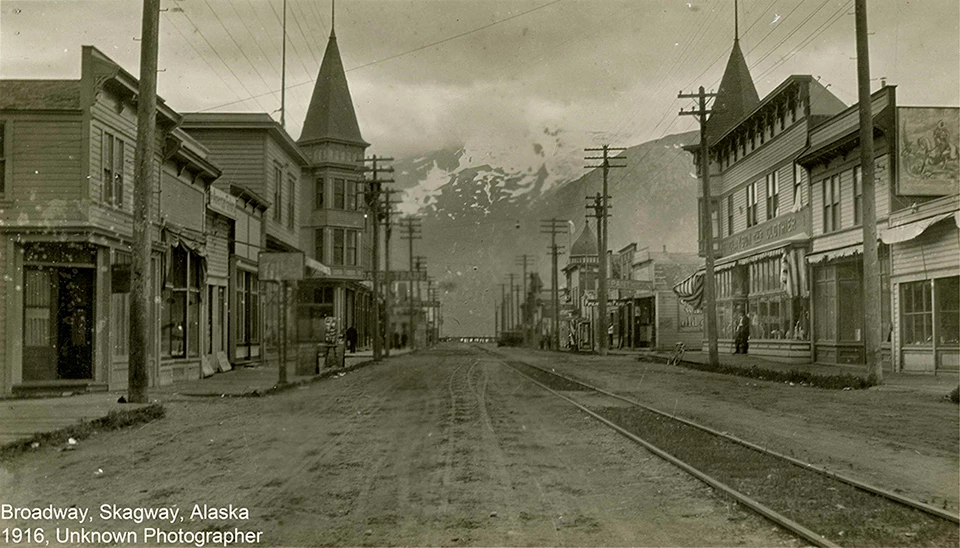
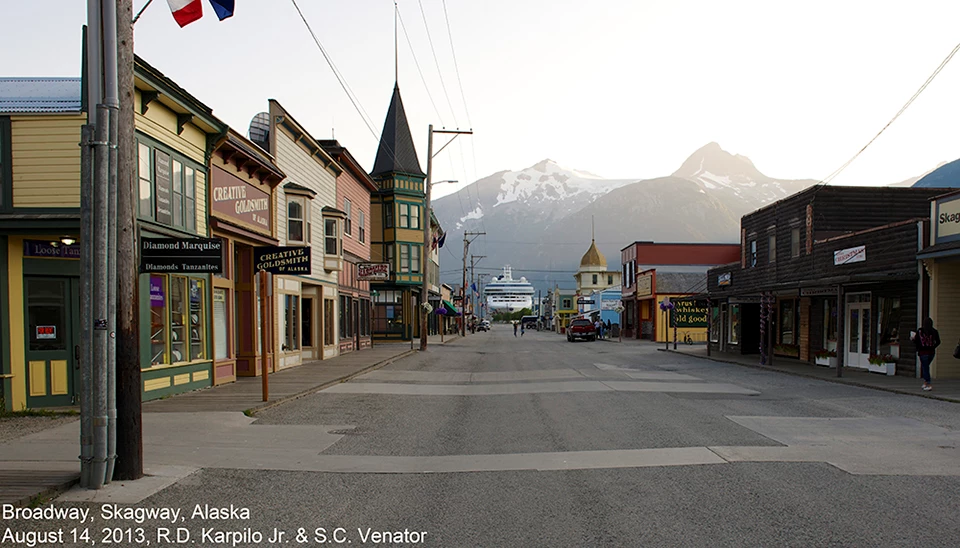
Left image
Broadway, Skagway, Alaska 1916.
Credit: NPS, Klondike Gold Rush National Historical Park Library, B4-126-8481
Right image
Broadway, Skagway, Alaska 2013.
Credit: NPS photo/R. Karpilo & S. Venator
In those days, things were booming; the bright lights were aglow,
The city found the gambler and the girls up on the row.
I dug up my monthly fine the same as all the rest.
Nothing was too good for me; I always bought the best…
When the roughneck came to town and brought along his poke,
A few turns at the roulette wheel would send him back home broke.
He got something for his money when he went and bought a dance,
But when he played the roulette wheel, he never had a chance.
You really can’t imagine how good it made me feel,
To win the sucker’s money, then listen to him squeal.
Conditions now are different; things then were not the same,
For the milk of human kindness did not figure in the game.
So I had to change my system; I earn an honest living now.
I drive the Skagway Streetcar for my daily chow.
Every dog must have his day, as everybody knows,
So I cut out the porterhouse and put on working clothes.
Soapy Smith and many more have long since gone to rest,
But I, through honest dealings, with many friends am blessed.
I’m an authorized Ford dealer, an undertaker, with all kinds of supplies,
And hope to be a doctor before many years go by.
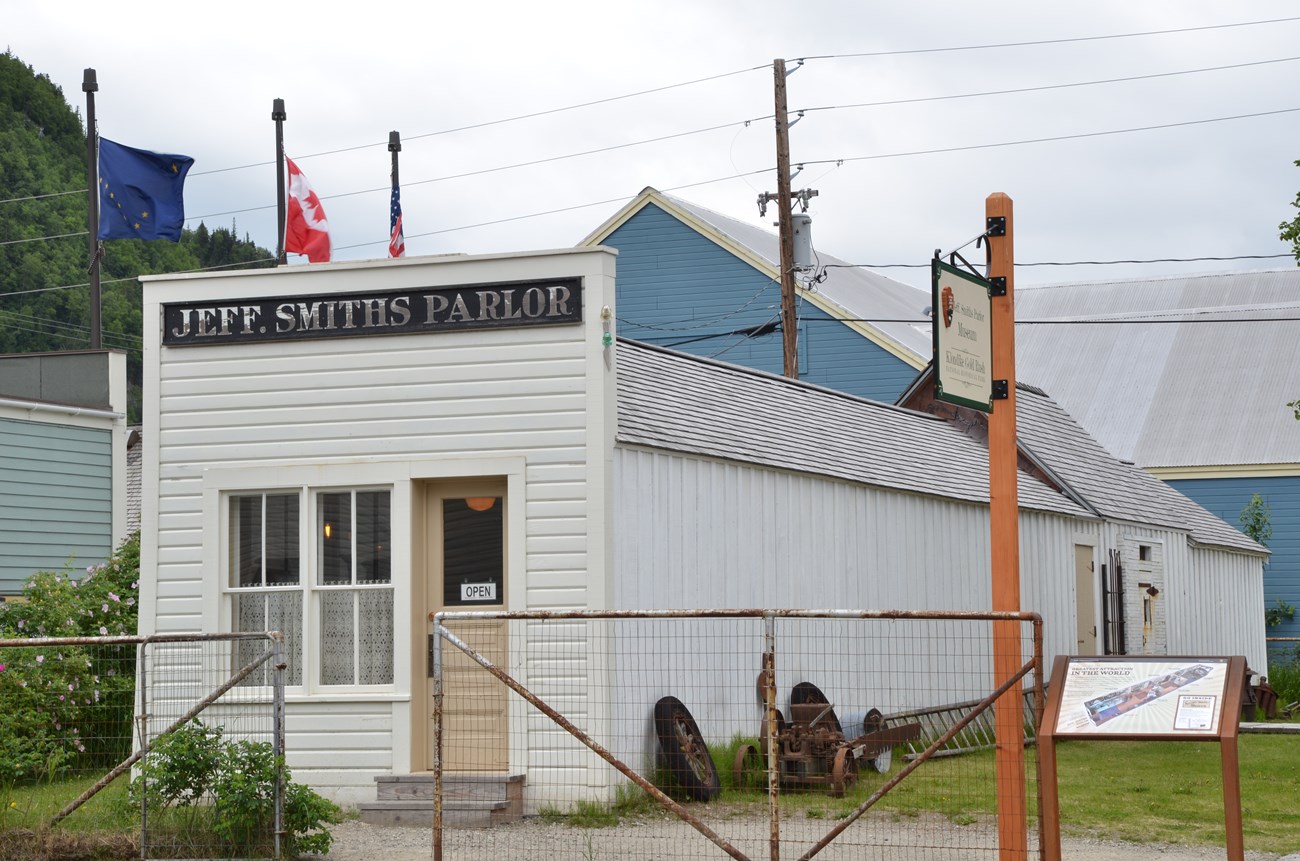
NPS photo/S. Spatz
Since the gold rush days of 1897, Skagway has transformed into a town that welcomes thousands of ship passengers each summer. Over the course of over a century, community members have shaped Skagway’s folklore and appearance to introduce newcomers to the area. When winter arrives and Broadway is quiet, you might be able to take a closer look at the buildings on the street and imagine the many layers of Skagway’s history, “intentionally bad poems” not included.
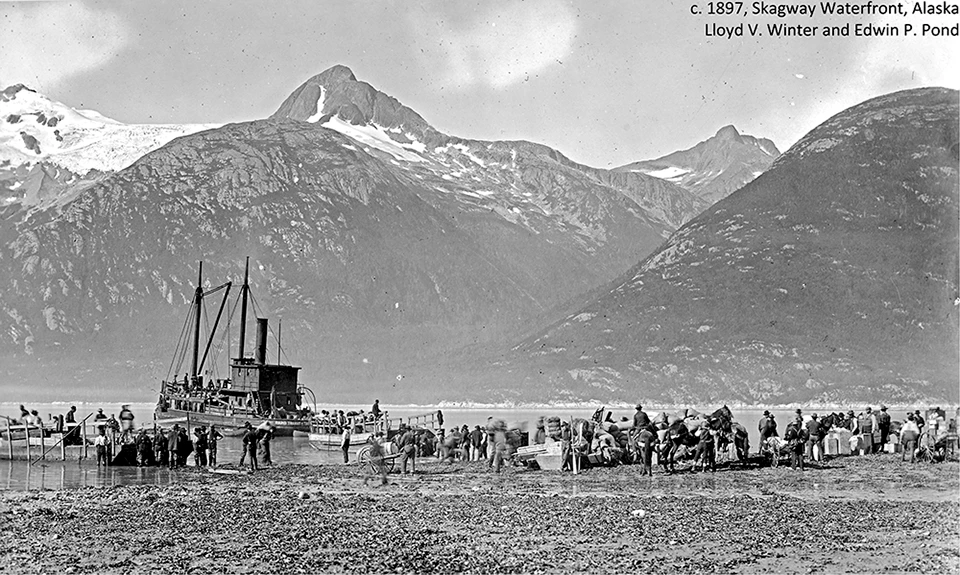
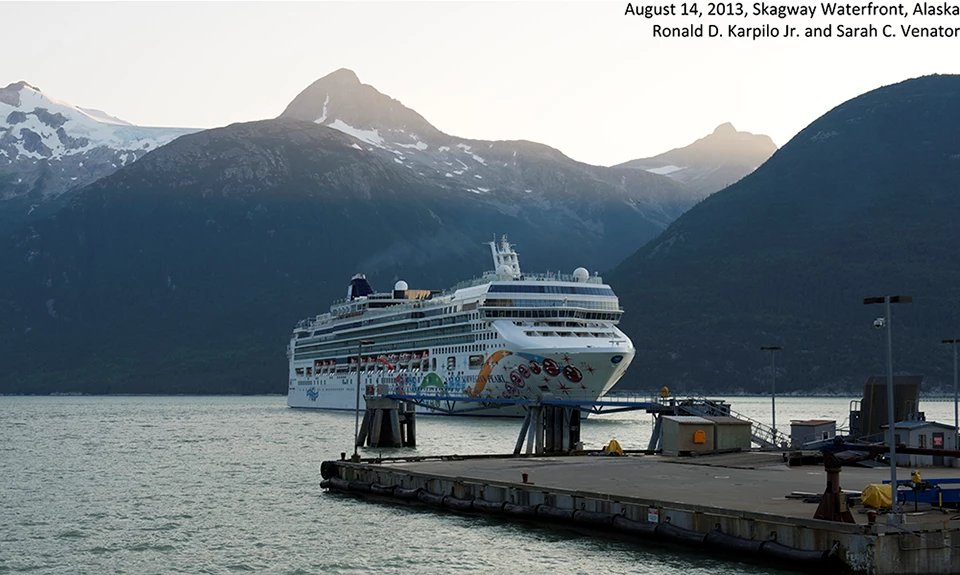
Left image
Skagway Waterfront 1897.
Credit: NPS, KLGO, George & Edna Rapuzzi Collection, KLGO 55745b. Gift of the Rasmuson Foundation.
Right image
Modern photo of Skagway Waterfront.
Credit: NPS photo/R. Karpilo and S. Venator
About This Article
This article was researched and written by Susannah Dowds, the Assistant Historian at Klondike Gold Rush National Historical Park in November 2015. It was originally given as a radio talk. Information was supplied by the following sources:
Berton, Laura. I Married the Klondike. Madeira Park, BC: Lost Moose Publishing, 2005.
Brady, Jeff. Skagway City of the New Century. Skagway, AK: Lynn Canal Publishing, 2013.
Norris, Frank B. Legacy of the Gold Rush: An Administrative History of Klondike Gold Rush
National Historical Park. Anchorage, AK: National Park Service, 1996.
State of Alaska. “Not Seasonally Adjusted Monthly and Annual Unemployment Rates for
Municipality of Skagway 2010 to 2015.” Department of Labor and Workforce Development. Accessed Nov. 2, 2015. http://live.laborstats.alaska.gov/labforce/labdata.cfm?s=26&a=0.
